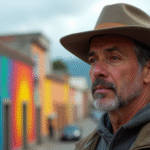Demographics of Indigenous Women in Mexico
As of 2023, the National Dynamics Demographic Survey (ENADID) identified approximately 20.3 million women who identify as indigenous in Mexico. However, only 19% of these women actually speak a native language.
These indigenous women are predominantly between 30 and 59 years old, with four out of ten falling into this age group. The remaining distribution is as follows: 22% are under 15 years old, 21% are between 15 and 29 years old, and 16% are 60 years or older.
The majority of indigenous women reside in the southern and southeastern states of Mexico, including Oaxaca, Yucatan, Chiapas, Quintana Roo, and Guerrero.
Linguistic Diversity Among Indigenous Women
Despite the stable or growing indigenous female population in certain regions, the proportion of women who command their native language has significantly decreased. Only 19% of self-identified indigenous women speak a native language, highlighting the need for policies to reverse linguistic diversity loss in Mexico.
Among indigenous female language speakers, the most common languages are Nahuatl, Maya, Tzeltal, and Zapotec. Although indigenous languages are dwindling, Mexico remains one of the world’s top ten countries for linguistic diversity and second in Latin America.
The National Institute of Statistics and Geography (INEGI) records around 68 languages with speakers, alongside over 300 language variations. The UNESCO acknowledges that the primary challenges indigenous communities, especially women due to gender disparities, face in preserving linguistic diversity are the scarcity of socially, economically, educationally, and labor-wise adapted tools to their mother tongues.
Social Challenges: Educational Gap, Poverty, and Gender Inequality
Indigenous women are the most vulnerable group among all Mexican women, facing the highest number of social deficits according to the Multidimensional Poverty Index.
Indigenous women average 6.1 years of schooling compared to 10.5 years for non-indigenous women. Among women aged 15 or older, 24.2% were illiterate—eight times higher than the 3.1% illiteracy rate among non-indigenous women.
Moreover, one in four indigenous girls and adolescents do not attend school, creating a nearly 12-percentage-point gap compared to girls and adolescents not identifying as indigenous.
Even when compared to indigenous men, women face greater vulnerability in terms of poverty rates. In 2024, 62% of indigenous women were living in some form of poverty.
Indigenous women in Mexico represent millions of voices crucial for preserving the country’s cultural wealth, yet they encounter structural inequalities limiting their effective access to rights and a life free from violence. Sadly, many native languages in Mexico remain at risk of disappearing.
To reverse these trends, public policies with an intercultural focus, comprehensive bilingual education projects, access to basic services, and programs aimed at improving the well-being of indigenous women and securing their rights are essential.
Commemoration of the International Day of Indigenous Women
During the commemoration of the International Day of Indigenous Women, President Claudia Sheinbaum unveiled the translation of the Women’s Rights Charter into 35 indigenous languages.
These translations will be distributed across indigenous and afro-Mexican communities nationwide.
“Indigenous women have been rendered invisible for many years, not by their communities or themselves but by society. We aim to reclaim their rightful place as they are essential to Mexico, transmitting culture and languages. Now it’s about recognizing that they have all the rights, just like any other woman and man,” stated the president.
This presentation was accompanied by indigenous language-speaking officials and interpreters who participated in the translation process of the Women’s Rights Charter.
Key Questions and Answers
- What is the demographic profile of indigenous women in Mexico? Approximately 20.3 million women identify as indigenous, with the majority aged between 30 and 59 years old. The highest concentrations reside in southern and southeastern states like Oaxaca, Yucatan, Chiapas, Quintana Roo, and Guerrero.
- What percentage of indigenous women speak a native language? Only 19% of self-identified indigenous women speak a native language, indicating a need for policies to preserve linguistic diversity.
- Which languages are most commonly spoken by indigenous women in Mexico? The most common languages are Nahuatl, Maya, Tzeltal, and Zapotec.
- What challenges do indigenous women face regarding linguistic diversity? Despite dwindling indigenous languages, Mexico remains one of the world’s most linguistically diverse countries. The main challenges are the scarcity of socially, economically, educationally, and labor-wise adapted tools to their mother tongues.
- What social challenges do indigenous women encounter in Mexico? Indigenous women are the most vulnerable group, facing significant educational gaps, high poverty rates, and gender inequality.
- What initiatives were taken to support indigenous women’s rights? During the International Day of Indigenous Women, President Claudia Sheinbaum presented the translation of the Women’s Rights Charter into 35 indigenous languages, aiming to distribute them across indigenous and afro-Mexican communities.






